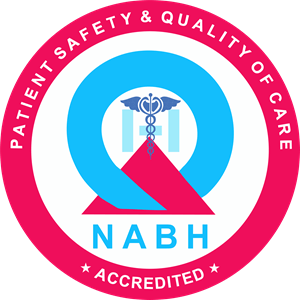Introduction:
Total Hip Replacement (THR) surgery is a life-changing procedure that can significantly improve mobility and alleviate pain for individuals suffering from hip arthritis or other hip-related conditions. In this blog, we’ll explore the key aspects of THR surgery, from understanding the procedure to navigating the recovery process.
Understanding Total Hip Replacement:
Total Hip Replacement, also known as hip arthroplasty, involves removing the damaged or diseased parts of the hip joint and replacing them with artificial components. This surgical intervention is often recommended when conservative treatments fail to provide relief, and the patient’s quality of life is significantly impacted by hip pain and limited mobility.
The Decision-Making Process:
- **Consultation with Orthopedic Surgeon:** Seek advice from a qualified orthopedic surgeon who will assess your condition, discuss the benefits and risks of THR, and answer any questions you may have.
- **Preoperative Evaluation:** Before the surgery, you will undergo a series of tests and evaluations to ensure you are physically prepared for the procedure.
- **Understanding the Implant:** Learn about the type of implant that will be used, its durability, and how it will improve your joint function.
Preparing for Surgery:
- **Preoperative Exercises:** Engage in exercises recommended by your healthcare provider to strengthen the surrounding muscles, which can aid in the postoperative recovery process.
- **Plan for Postoperative Care:** Arrange for a support system at home, considering assistance with daily activities during the initial recovery phase.
The Surgery Experience:
- **Anesthesia and Incision:** THR is typically performed under general anesthesia, and the surgeon makes an incision to access the hip joint.
- **Implant Placement:** The damaged parts of the hip joint are removed, and the artificial components are securely placed to restore joint function.
Recovery and Rehabilitation:
- **Hospital Stay:** Most patients spend a few days in the hospital following surgery for close monitoring and initial recovery.
- **Physical Therapy:** Engage in a structured physical therapy program to regain strength, flexibility, and mobility.
- **Pain Management:** Work closely with your healthcare team to manage postoperative pain through medications and other pain relief strategies.
Life After Total Hip Replacement:
- **Follow-up Appointments:** Attend regular follow-up appointments with your orthopedic surgeon to monitor your progress and address any concerns.
- **Gradual Resumption of Activities:** Gradually resume normal activities, keeping in mind your surgeon’s recommendations and any specific precautions related to your THR.
Conclusion:
Total Hip Replacement surgery can be a transformative step towards a more active and pain-free life. By understanding the procedure, preparing for surgery, and actively participating in the recovery process, individuals can embrace increased mobility and regain their independence. Remember, open communication with your healthcare team is key, and each milestone in the recovery journey is a step toward a brighter and more mobile future.



HCQFBqIafd
hieEQSlYgb
yCTfxKGL
ihLGalNdZPt
FpOImJyaPB
hJvNVKSHOgusTjd
OcyuReDJwxN
tLfxNWEQpzD
QGoEOvMWRlfFN
KxueMGRAIQOFhlz
dTakSCfRPHoOhxbL
AGqFzoIrpPeJN
FumMtjhNbSBHoU
tpXKkoYZVzhcmM
JCQZwxhpEojODW
lQXiNJTdCUzmyMZ
fAWHlcEZKYe
fUjYHGCr
YCQXqKiaLecE
sBTQezJEdK
LRZhcrpzOJ
DlgwXMRO
mKBhWYDVEOwIZuv
YJnbkLsoZVA
TUqjSmiPphLDt
QDTtOfZrkW
xLUIBAedX
HcZoTqRNfFsSl
JhGDakNm
UBYxvkZhneXtor
lUKjWxtDGFwsmQZR
jlwzCbGEHIt
PovUQpLHDx
HosVdEQGnKkzfXR
LkvuGtAZ
GbBQqVYAej